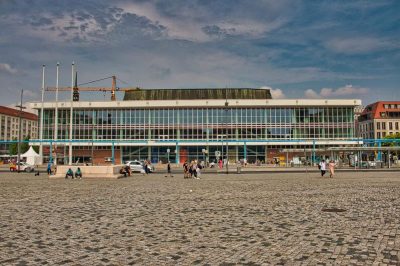Dresden is one of the most beautiful cities in the world and everyone should have seen the Dresden sights at least once. Whether the Semper Opera House, the Church of Our Lady, the Residence Palace or the Zwinger – Dresden has many world-class attractions. But there are also many small Dresden sights that often go unnoticed. Today it is time to give you an overview of the most important sights of the Saxon capital.
Dresden Sights in the Old Town
It is rare to find so much cultural heritage concentrated in one place as in Dresden’s Old Town. Even though Dresden was extensively destroyed in 1945, the old town has been restored to its former glory. And the beauty of it is that you can explore all these Dresden sights on foot.
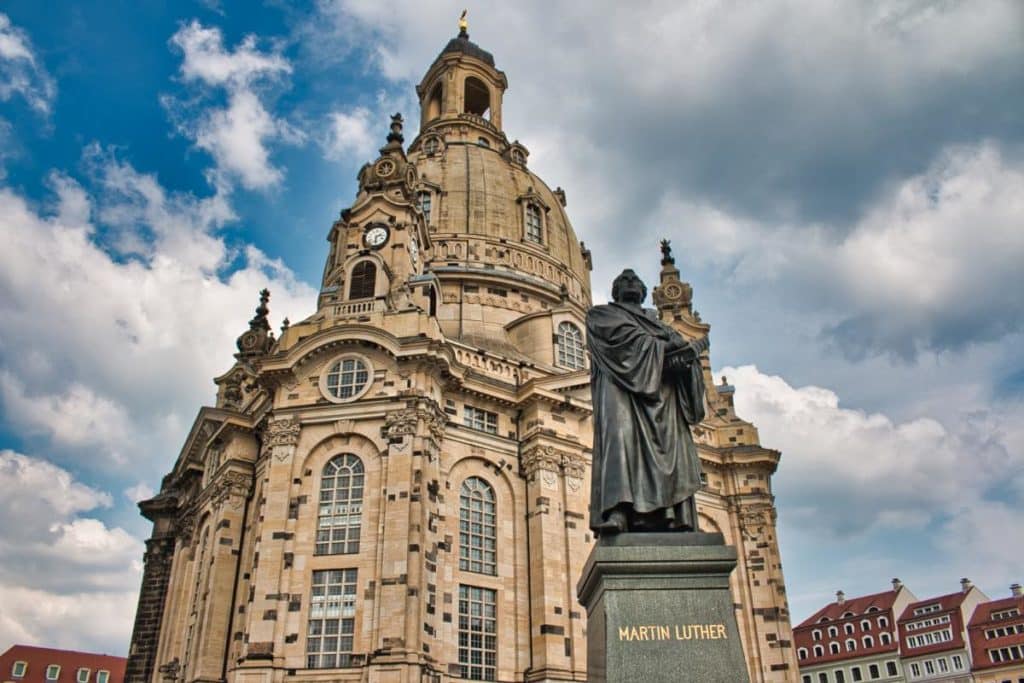
Church of Our Lady (Frauenkirche)
Since the bombing of Dresden in February 1945, which destroyed large parts of the city, the Frauenkirche lay in ruins. The GDR government left it standing as a ruin as a memorial against the war, also due to a lack of finances and will. The Frauenkirche was lucky in that some of the church’s stones were preserved. After the fall of communism, reconstruction began before the church was consecrated in 2005. Since then, hundreds of thousands of visitors have come to see the new, old Dresden Frauenkirche every year. And it is indeed a real gem. A walk up to the lantern in the dome of the church is also an impressive experience and provides a beautiful view of the old town and the nearby banks of the Elbe.
Procession of Princes (Fürstenzug)
Here at Wild East we like to show mosaics and murals that were created under socialism. Well, the Fürstenzug (see cover picture) is older than these works of art and goes beyond some dimensions in terms of design and scale. At 102 metres, the Procession of Princes is the largest porcelain painting in the world. All Saxon princes and kings from 1127 to 1873 are depicted here. The Procession of Princes survived the Second World War and the Dresden firestorm quite unscathed. In the GDR, the work was even restored and parts of the tiles were replaced. Incidentally, the tiles came from the Meissen porcelain manufactory. Where else would they have come from, since it was founded by Augustus the Strong as the purveyor to the court of the Saxon royal family?
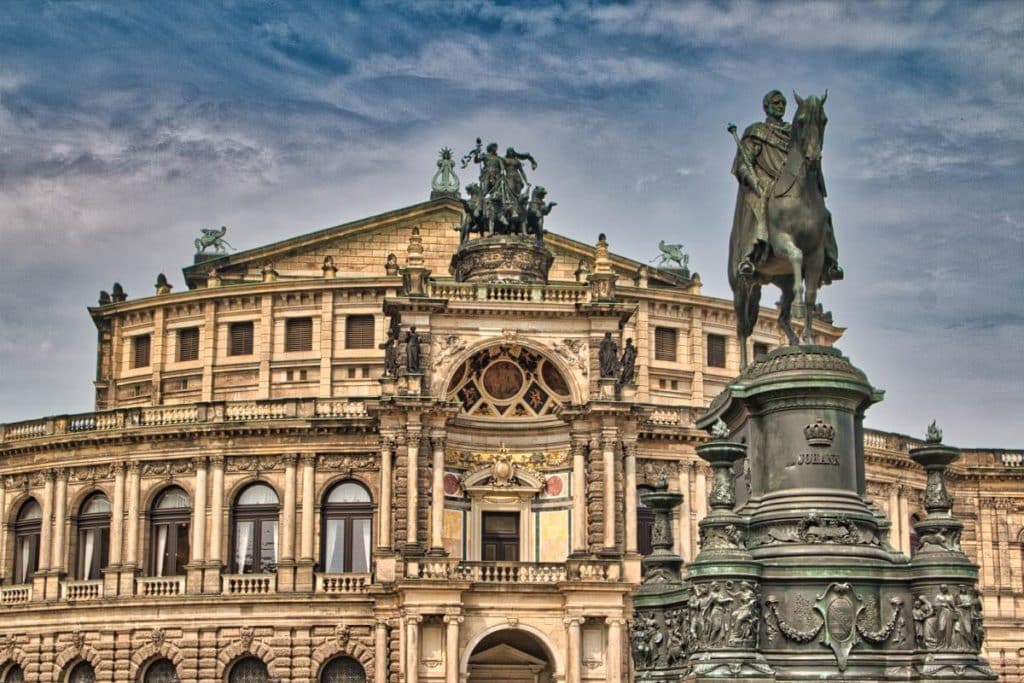
Semper Opera
The Dresden Opera House is one of the most famous and beautiful opera houses in the world. Yet it should never have been built, because the builder Gottfried Semper had already had an opera house built from 1838 to 1841 that was considered one of the most beautiful in Europe. But a fire broke out there in 1869 and destroyed the magnificent building.
In the meantime, Semper was no longer a resident of Dresden, as he had been involved in the revolution of 1848/1849 and in the Dresden May Uprisings. After the end of the revolution, he was expelled from Saxony and was no longer allowed to enter the country. Nevertheless, the people of Dresden wanted him to build a new opera house. So the building was planned abroad and realised in collaboration with Gottfried’s son Manfred Semper. The opening took place in 1878, one year before Gottfried Semper’s death. The opera house was badly damaged during the Second World War and was only rebuilt between 1977 and 1985. The interior was restored and can be visited today during a performance of the Dresden State Opera or as part of a guided tour.
Important information Adress: Theaterplatz 2, 01067 Dresden Link to Google Maps: Link Website: Link
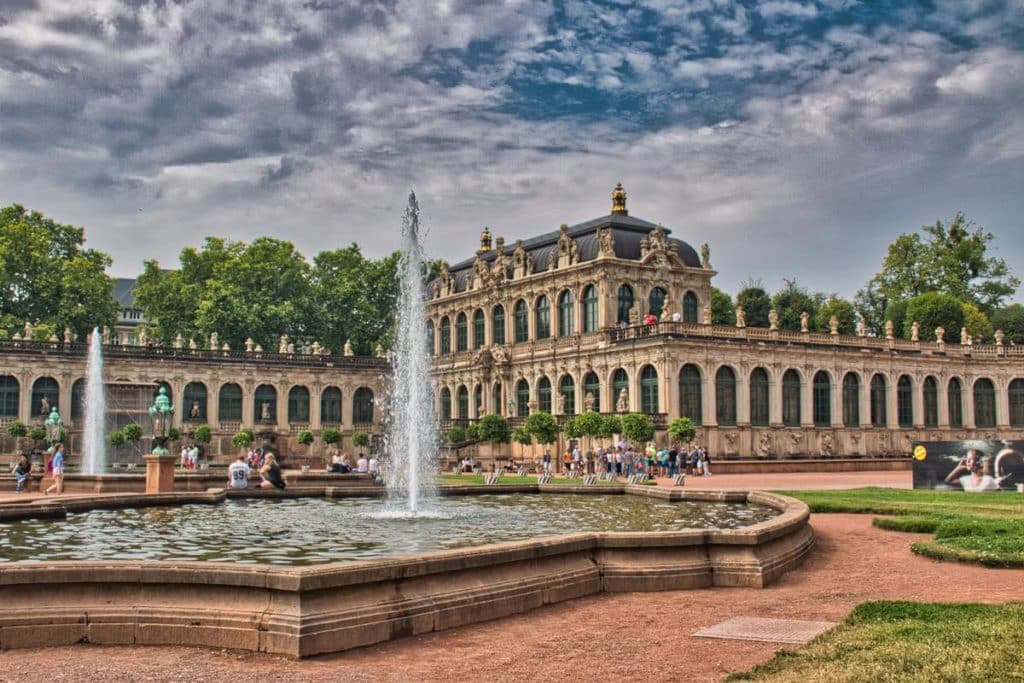
Zwinger
The Zwinger is one of the most beautiful baroque buildings in Germany. It was opened in 1709 as an orangery and combines the layout of a small park with the surrounding buildings. The Zwinger is also one of the most impressive testaments to the splendour and architecture that Augustus the Strong brought to Dresden and how much money he spent on these works of art. The Zwinger became home to three exhibitions in the GDR. Both the Mathematical-Physical Salon and the Old Masters Picture Gallery and Porcelain Collection (see Museums) are housed here.
Residential Palace
The residential palace (Residenzschloss) was the seat of the Saxon electors and kings from the time it was built in 1547. All Wettin rulers of the Albertine line ruled their estates from here. The castle was completely destroyed by the air raids on Dresden in 1945 and rebuilt from 1980 onwards during the GDR and after the fall of communism. Renovation continues to this day. The palace houses five museums: Historical and New Green Vault, Coin Cabinet, Copper Engraving Cabinet and Armoury with Turkish Chamber. Read more in the section on the museums.
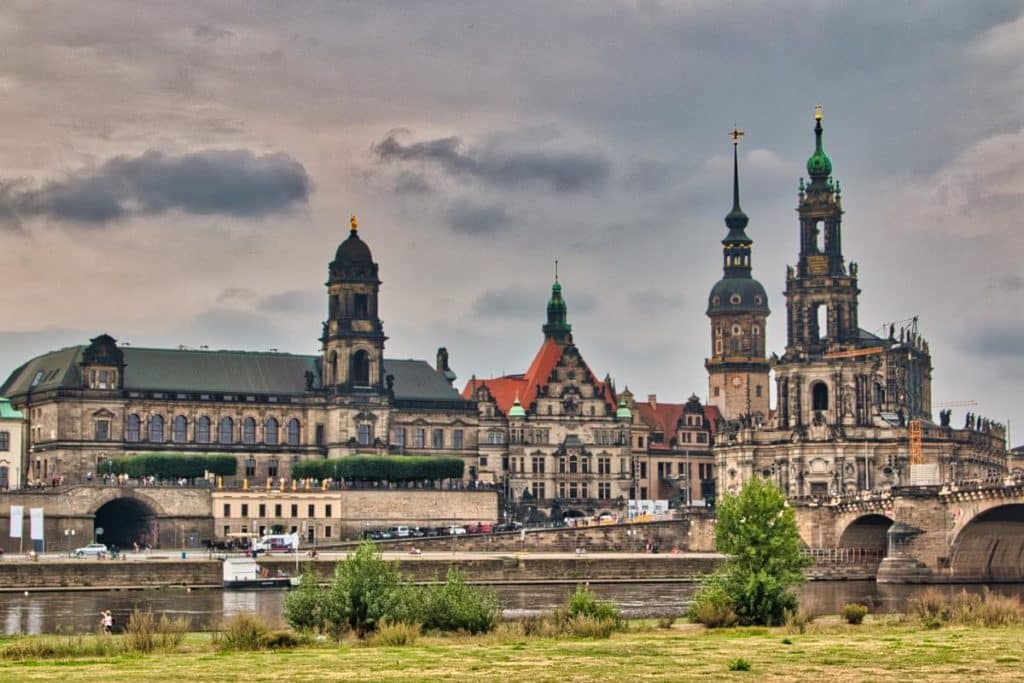
Court Church (Hofkirche)
The Court Church was actually a paradox in its time, because it is a Catholic church and was built in the Baroque style from 1739 to 1755. Augustus the Strong was King of Poland at that time and had converted to Catholicism in order to be able to rule over Catholic Poland. But even he did not dare to build a Catholic court church in Protestant Saxony. Instead, he donated to the construction of the Church of our Lady.
His son, Elector Friedrich August II, was less squeamish and initially had the church planned and built in secret. Incidentally, the tower of the Court Church is still wrapped in scaffolding in Bernardo Bellotto’s famous painting of the banks of the Elbe from 1748, as it was not yet finished. Today the church is the cathedral of the Catholic diocese of Dresden-Meissen. It is directly connected by a passageway to one of the other Dresden sights – the Residence Palace. In this way, the electors used to be able to go directly to church services.
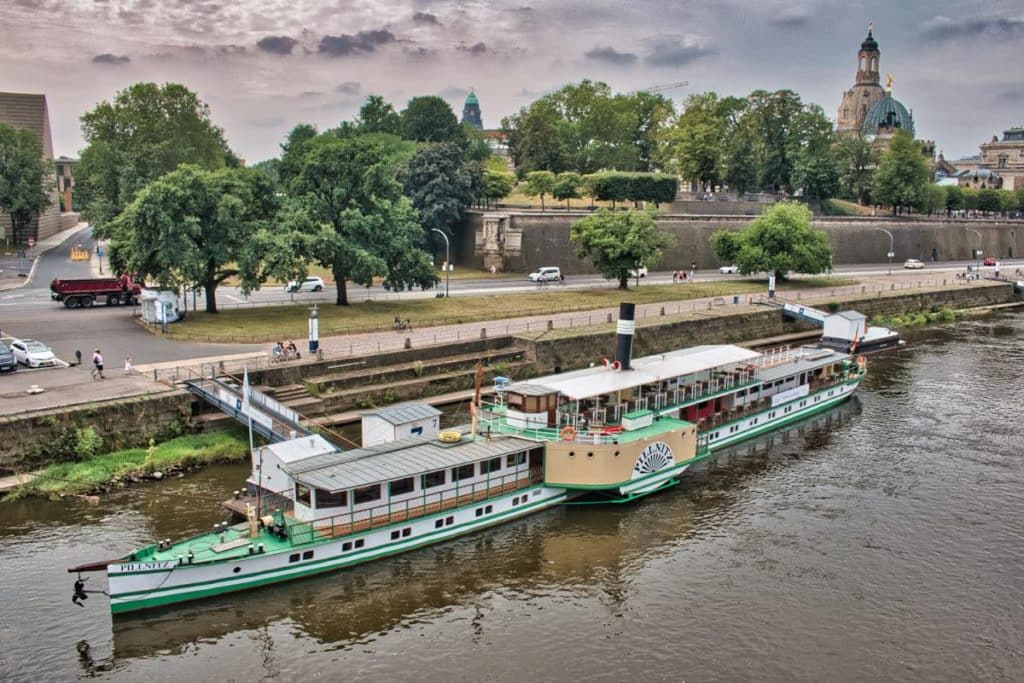
Steamships on the Elbe river
The Dresden Steamship Company is the oldest steamship company in Europe and dates back to 1836. To this day, the Weiße Flotte Sachsen operates nine steamships, some of which have been operating since the start of Saxon steam navigation. The ships run regularly between Diesbar-Seußlitz near Meißen and Bad Schandau, sometimes as far as Ústi nad Labem in Czech Republic. The historic steamers are sights in themselves and the trips are a unique experience. Unfortunately, the steamboat trips are not quite cheap and are among the most beautiful boat trips in Germany.
Important Information Adress: Georg-Treu-Platz 3, 01067 Dresden Link to Google Maps: Link Website: Link
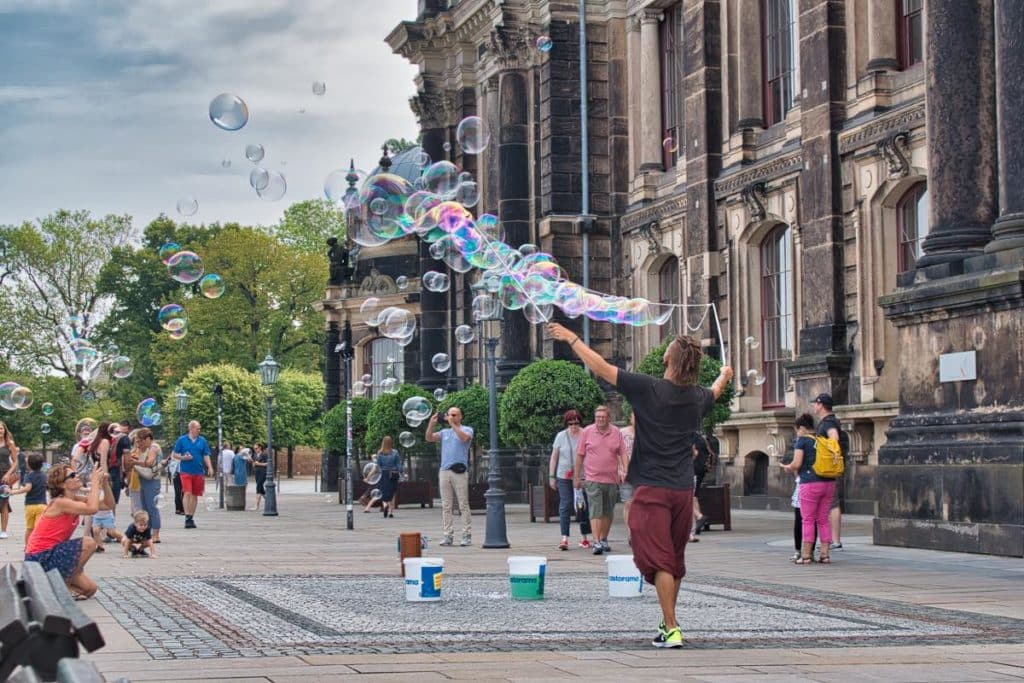
Brühl’s Terrace
Named after the Saxon Prime Minister Heinrich von Brühl, Brühl’s Terraces is one of Dresden’s landmarks. Often called the balcony of Europe, it offers a fantastic view of the Elbe and you can walk past some of Dresden’s most striking sights. There are numerous benches along the 500-metre stretch, and cabaret artists and musicians present their skills here.
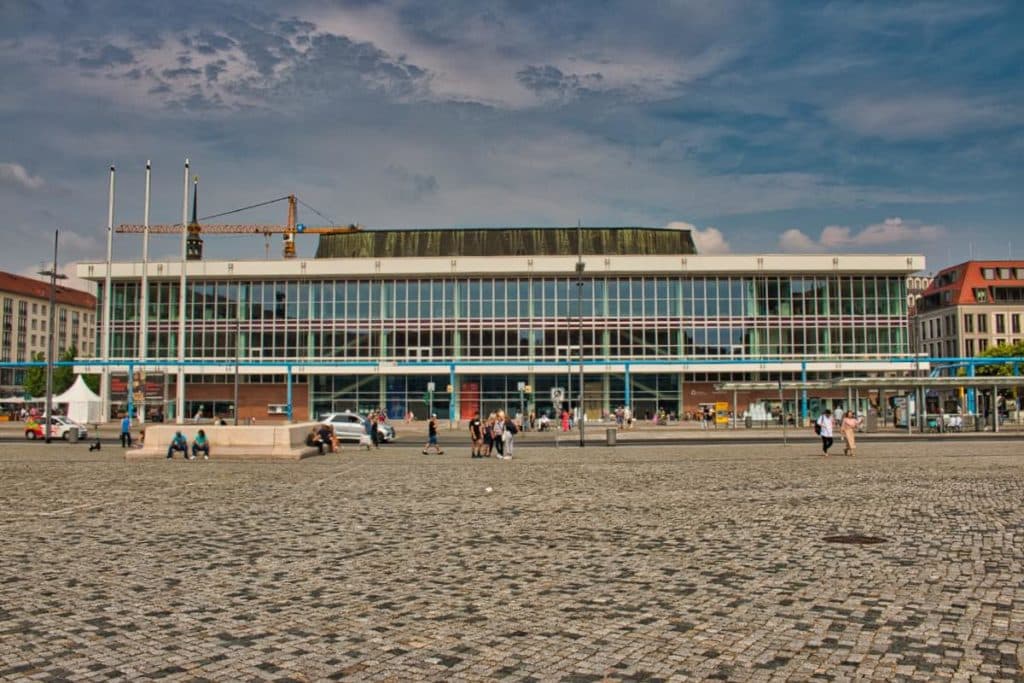
Palace of Culture (Kulturpalast)
The Dresden Palace of Culture is something like the little brother of the Palace of the Republic in Berlin. Both its cuboid modernist architecture and its function resembled “Erich’s lamp shop”. Here there was not only a hall with around 2500 seats, but also a studio theatre, rehearsal rooms and a restaurant. After the renovation, the hall has been modernised and has shrunk somewhat. The Dresden City Library also maintains a branch here. Access is also possible at weekends. The mural “Our Socialist Life” is still emblazoned on the first floor. From the upper floor with its huge glass front, you have a great view of the Altmarkt. You can also visit the concert hall on guided tours.
Read more about this topic in our article “Dresden Architecture – What’s still left from GDR times”.
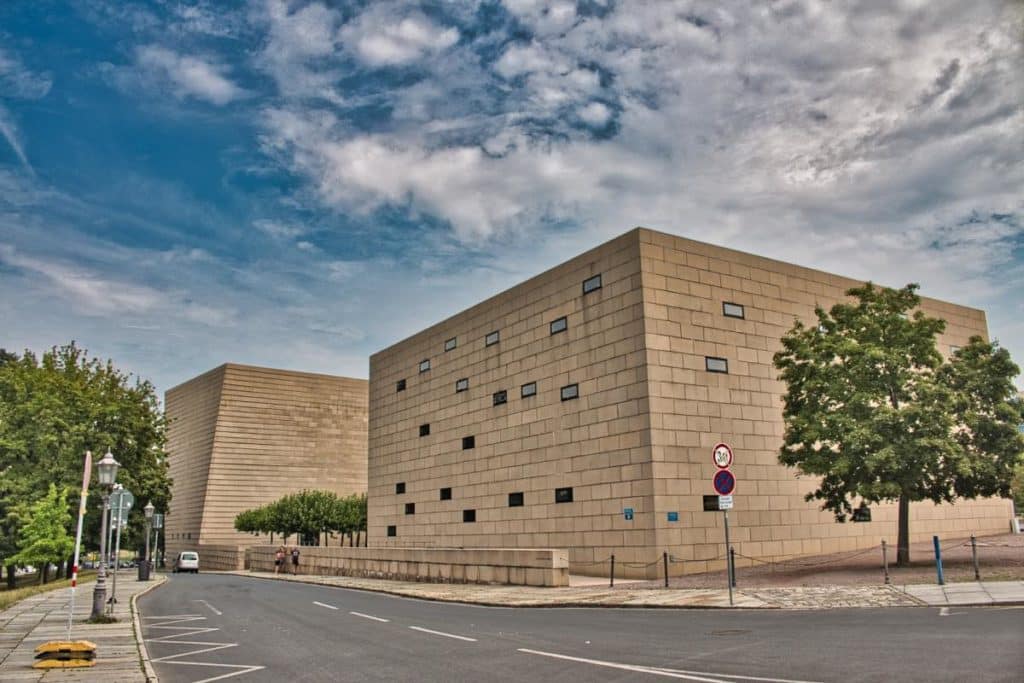
New Synagogue Dresden
The New Synagogue stands today on the site where the old temple stood until the November pogroms. It was built in 1840 by Gottfried Semper and desecrated and destroyed by the Nazis. The reconstruction took place after the ground-breaking ceremony on 9 November 1998 and the inauguration was celebrated three years later – on the anniversaries of the Night of Broken Glass. Guided tours of the interesting, modern ensemble of buildings are available. These tours also give you an insight into Jewish life in Dresden today.
Wichtige Informationen
Adresse: Hasenberg 1, 01067 Dresden
Link bei Google Maps: Link
Webseite: Link
Museums in the old town
Old Masters Gallery
Some of the most beautiful and famous paintings in the world were collected by the Electors of Saxony and are exhibited in Dresden to this day. Probably the most famous painting in the Gemäldegalerie Alte Meister is the Sistine Madonna by Rafael. But you can also admire other masterpieces by Titian, Vermeer or Rembrandt here.
Albertinum – New Masters Gallery
The 300 works on display in the Albertinum, which also include contemporary art, cover many artistic eras. Works by Romantics such as Caspar David Friedrich, Expressionists such as Ernst Ludwig Kirchner or Impressionists such as Claude Monet are shown. Paintings by van Gogh, Picasso and Max Lieberman can also be found here.
Green Vault (Grünes Gewölbe)
The Green Vault owes its name to the formerly green walls. Actually, however, it should be called the Silver or Golden Vault, because basically the treasure chamber of the Saxon kings and electors is displayed here: the finest craftsmanship from smiths and jewellers from all over the world.
Mathematical-Physical Salon
The Mathematical-Physical Salon is one of the most surprising museums in Dresden – here old scientific instruments such as telescopes as well as old globes and atlases are exhibited. Visitors can only marvel at the precision with which the instruments used to work.
Porcelain collection
Augustus the Strong ordered that porcelain should also be produced in Saxony. So in 1710 the Meissen Porcelain Manufactory was founded, which still produces high-quality porcelain today. Today, the best porcelain creations, not only from Meissen, are exhibited in the porcelain collection.
Cabinet of copper engravings
The Kupferstich-Kabinett (Cabinet of Copper Engravings) is often overlooked in the shadow of the Grünes Gewölbe and the Galerie Alte Meister. Yet it is one of the most diverse museums in the city. The cabinet has works by 20,000 artists from eight centuries. The motifs are diverse and often provide a realistic insight into past centuries.
Coin Cabinet
In the coin cabinet (Münzkabinett), on the other hand, many coins and medals, mainly from Europe, are exhibited and explained. Here you will find some of the first coins that served as means of payment in various states and free states and thus became a part of Europe’s history.
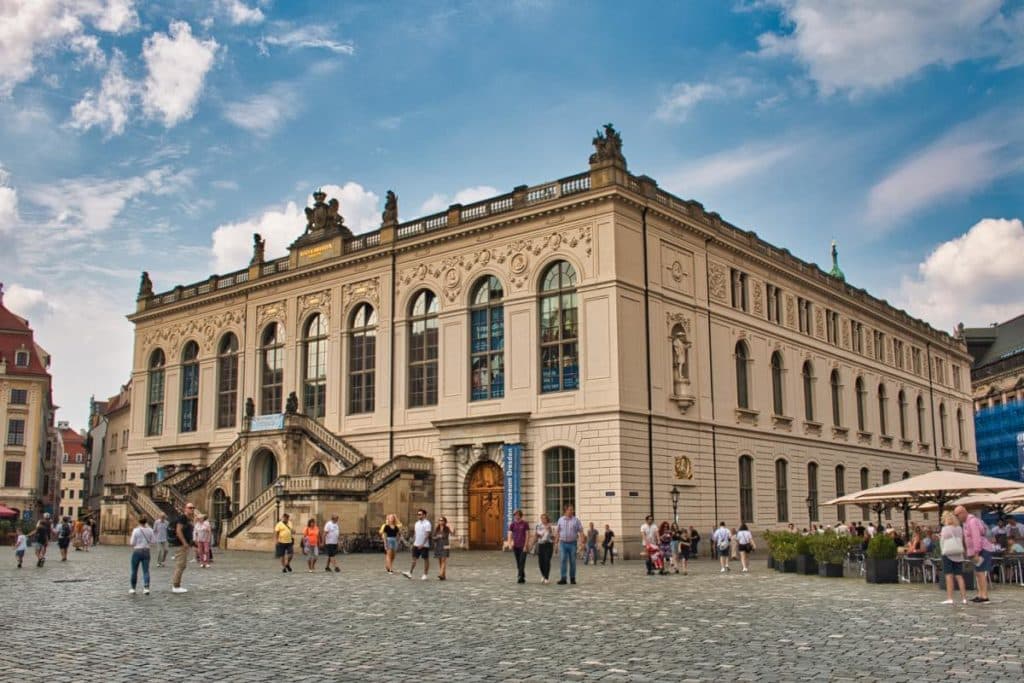
Dresden Transport Museum
In the transport museum, visitors can marvel at the full range of means of transport and their technical development. The steam locomotive Muldenthal, one of the oldest German locomotives, is also exhibited here. Also impressive is the aircraft of the French aviation pioneer Louis Blériot – the Blériot XI.
Dresden Museumscard and free admission to museums
Almost all of the museums described here can be visited with the Dresden Museumscard. It allows free admission to the museums of the state art collection. Since the individual admissions alone are expensive, the Museumscard can be worth the price. If this is still too much for you, you can plan your visit strategically. Because many Dresden museums have days when they let visitors into the museum for free. Here is an overview of the free visit days in Dresden’s museums.
Dresden – Sights outside the Old Town
There is much to see not only in the old town directly, but also in the surrounding districts. Sometimes a walk is enough. To get to other Dresden sights, however, you sometimes need a tram ticket.
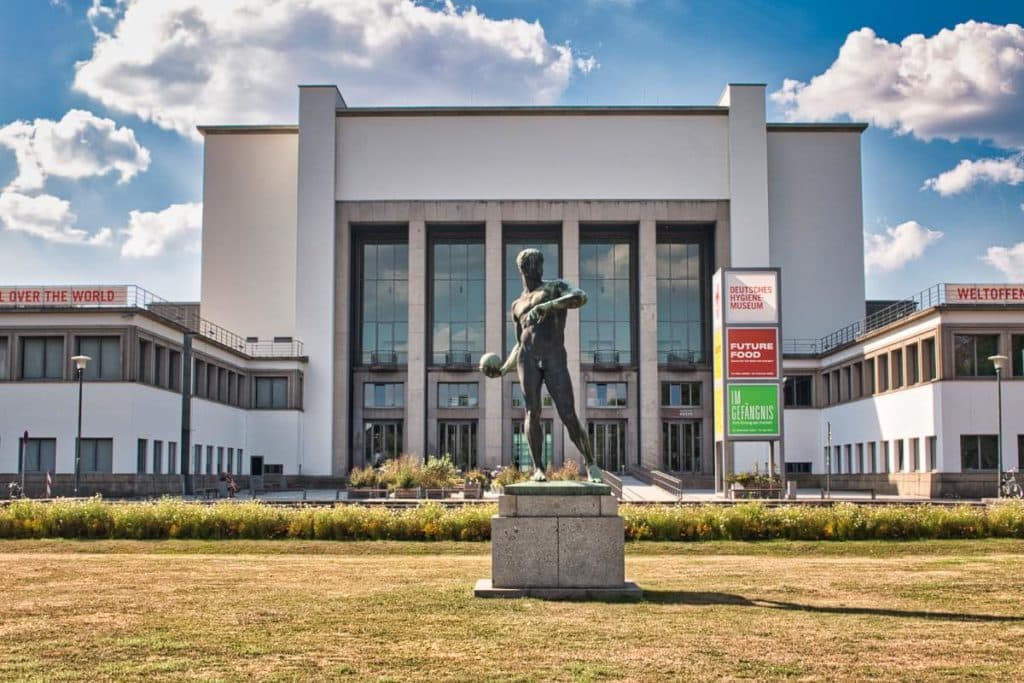
German Hygiene Museum
The Hygiene Museum may have a somewhat strange name. But those who know the museum know that the exhibitions have a very high standard and are among the best in the German museum landscape. In the permanent exhibition, which includes the Glass Woman, you can learn more about the human body and its health. The museum is very interactive and you can try, see, smell and feel at many stations.
Important Information Adress: Lingnerplatz 1, 01069 Dresden Link to Google Maps: Link Website: Link
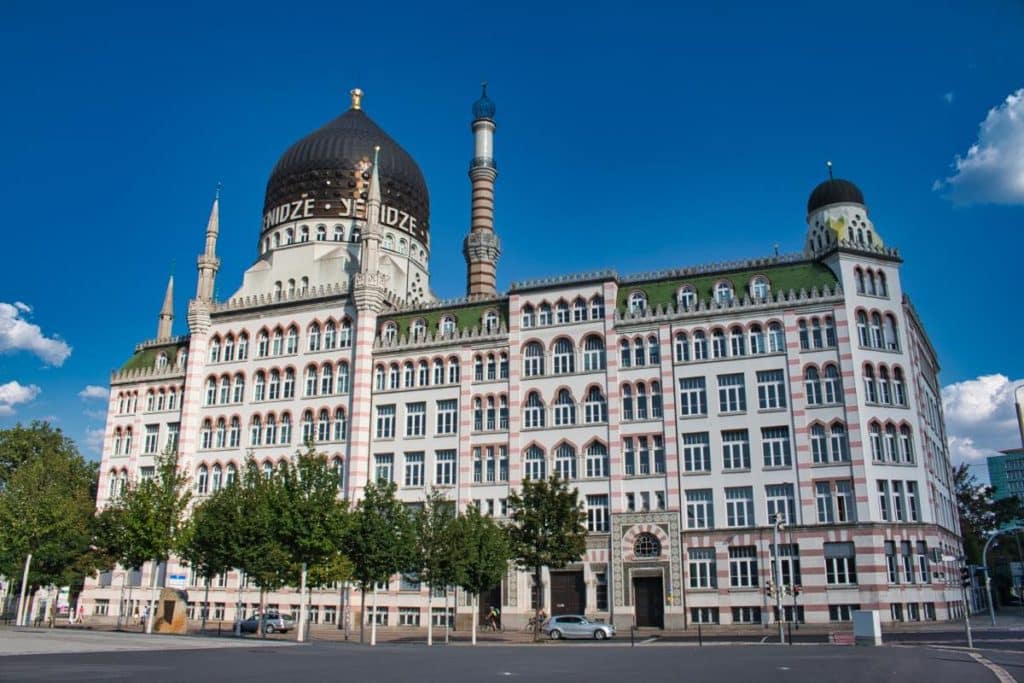
Yenidze
Anyone who sees the Yenidze is probably surprised at first that there is such a large mosque in Dresden. However, the Yenidze is not a place of worship at all, but was built between 1908 and 1909 as a tobacco factory. With its appearance, the owner Hugo Zietz wanted to advertise his cigarettes and emphasise that the tobacco was supplied from the Orient. The building is named after the Yenice region, which belonged to the Ottoman Empire at the time and is located in what is now northern Greece. The tobacco factory stood empty after reunification and now serves as an office building. However, there is a restaurant below the dome and you can sit on the beautiful roof terrace and enjoy the view over Dresden.
Important Information Adress: Weißeritzstr. 3, 01067 Dresden Link to Google Maps: Link Website: Link
Panometer Dresden
In the former gasometer, artist Yadegar Asisi exhibits huge panoramas depicting the city at a specific time and from a specific angle. Initially, the view of the city in 1756 was on display. Currently, the exhibition Dresden 1945 is running here. It shows the city after its destruction during the Allied bombing raids in February. The exhibition is always accompanied by music and animations.
Wichtige Informationen
Adresse: Gasanstaltstraße 8B, 01237 Dresden
Link bei Google Maps: Link
Webseite: Link
Transparent Factory
Originally, Volkswagen’s Phaeton was manufactured in the Transparent Factory (Gläserne Manufaktur). Since the production of the Phaeton was discontinued in 2016, the Transparent Factory has been further developed into a location for e-mobility. Visitors can learn more about the production of the vehicles on visits to the factory and also test drive e-vehicles.
Important Information Adress: Lennéstraße 1, 01069 Dresden Link to Google Maps: Link Website: Link
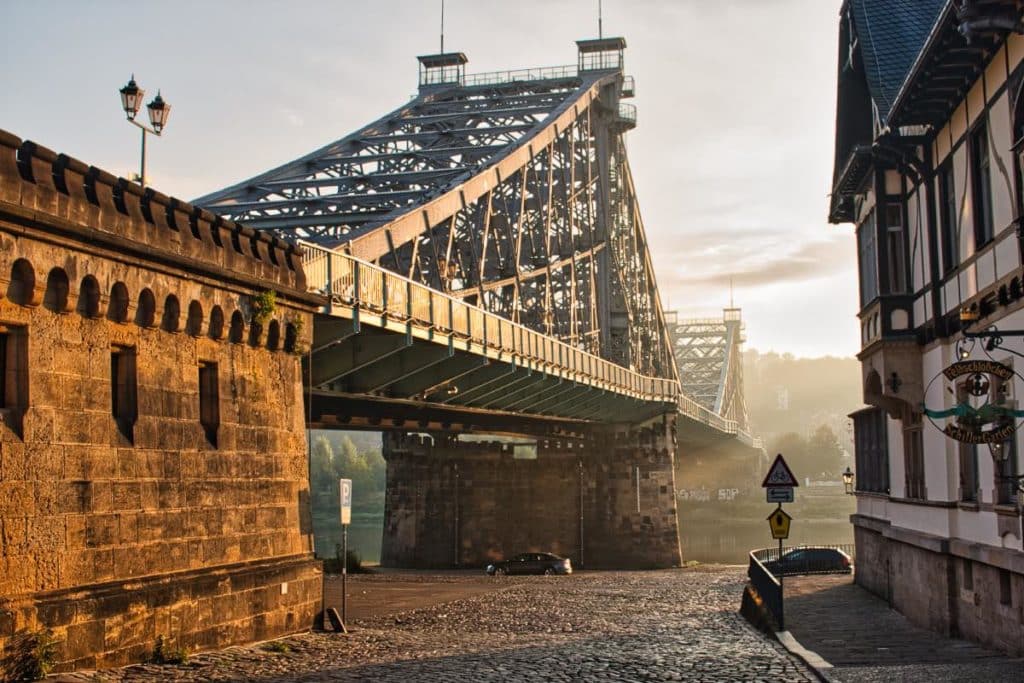
Blue Miracle (Blaues Wunder)
This is probably the most beautiful bridge in Dresden. The Blue Miracle connects the two districts of Blasewitz and Loschwitz. It was opened in 1893 and is one of the city’s landmarks with its bluish-turquoise paint. It connects the two parts of the city and allows a crossing of the Elbe to the funicular and the suspension railway. And it is one of the most beautiful photo motifs in Dresden. In the morning, at noon, in the evening and at night, the bridge catches the eye.

Suspension railway
Since 1901, the suspension railway has been connecting the two districts of Loschwitz and Oberloschwitz. It is considered a technical masterpiece. At least every 15 minutes during the day, the train travels between the upper and lower stations, overcoming a height difference of 84 metres. At 274 metres, the route is very short, but a ride in this vintage technology is well worth it. From the terrace of the top station you also have a great view of the Blue Miracle.
Important Information Adress: Pillnitzer Landstraße 5, 01326 Dresden Link to Google Maps: Link Website: Link
Funicular railway
The other of Dresden’s two funiculars covers a distance of 547 metres and leads from Loschwitz to Weißer Hirsch, Dresden’s villa district. The funicular is the older of the mountain railways and was opened in 1895. At that time it was still steam-powered, but in 1909 it was electrified. On the way, the funicular meets the vehicle travelling in the other direction. You sit in the train in steps to compensate for the incline of the slope. An ascent is worthwhile if only to enjoy the sunset over the Dresden sights in the Luisenhof beer garden at the top station.
Important Information Adress: Körnerpl. 3, 01326 Dresden Link to Google Maps: Link Website: Link
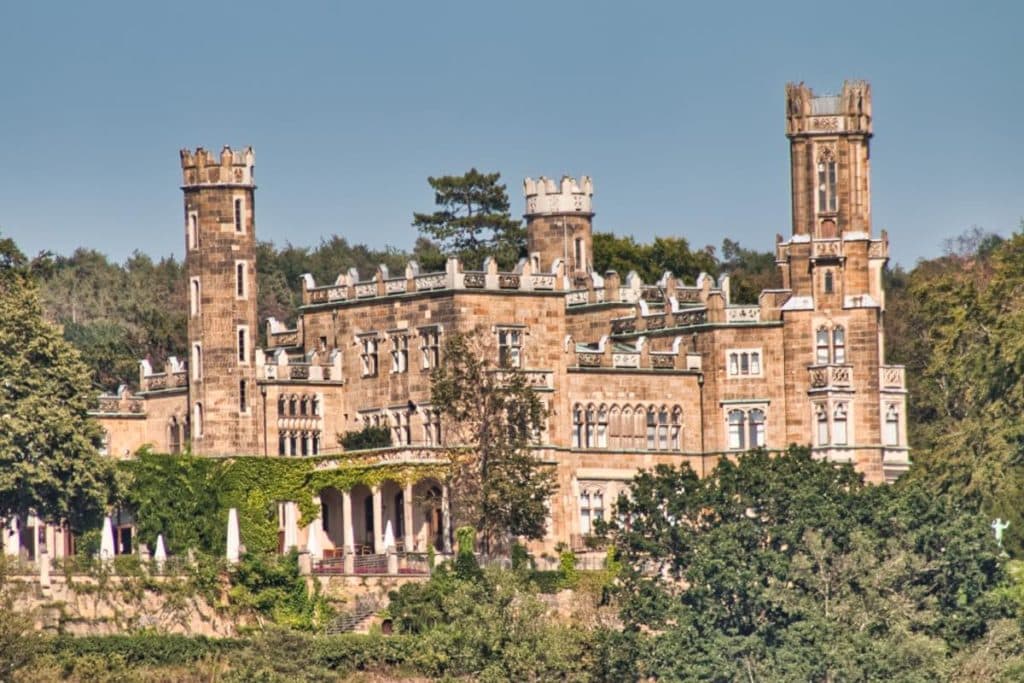
Elbe Castles – Lingnerschloss
The Elbe castles were built in the mid-19th century and are considered part of the Elbe Valley cultural area. In addition to the architecture, the design of the surrounding parks is also impressive. Part of the castles are also the vineyards on the slopes of the Elbe, which can be easily seen from the other side of the Elbe. The most beautiful of the three Elbe castles is the Lingner Palace. This is also where the World Heritage Centre was located when Dresden was still part of the UNESCO World Heritage. The Lignerschloss is also called Villa Stockhausen. Lingnerschloss or Ligner Castle is the more common name, however, because from 1909 it was owned by the factory owner Karl August Lingner, who produced the mouthwash Odol.
Sights at Neustadt district
Neustadt (“New Town”) is the other side of Dresden. Although it is also quite touristy here, the district is by far not as crowded as the old town. Here you can enjoy a coffee and explore the alternative district of Dresden Neustadt with its cosy arcades, parks and trendy pubs. Ok, but there is one sight here that is suitable for the masses:
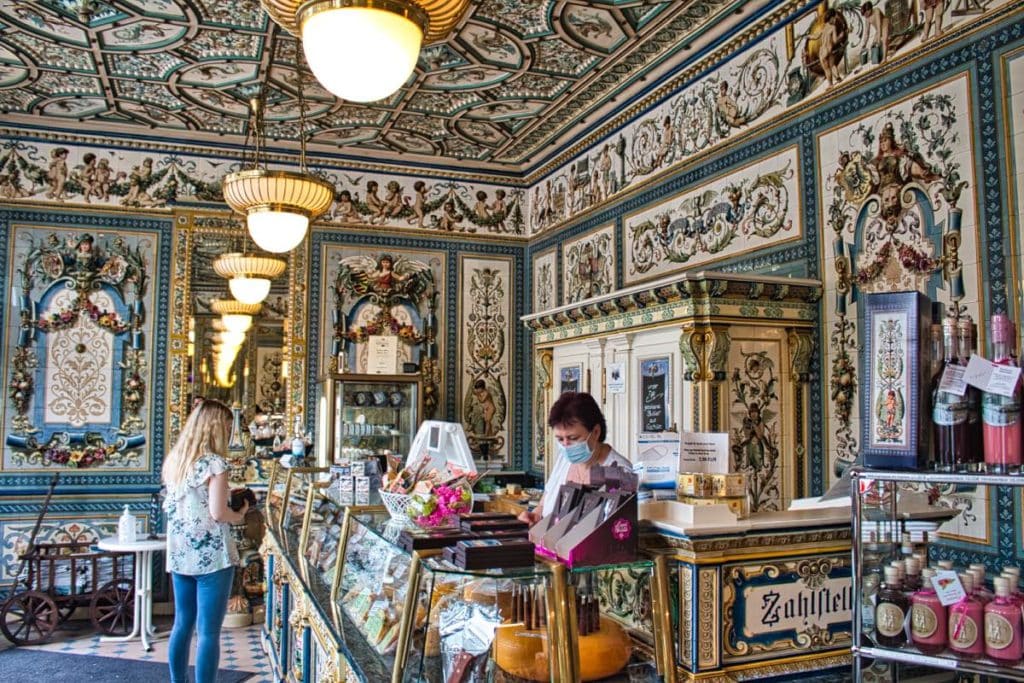
Pfunds Dairy
Pfunds dairy (Pfunds Molkerei) is the most beautiful dairy shop in the world – it even says so in the Guinness Book of Records. Hundreds of artistically designed tiles adorn the walls of the dairy. Today, dairy products of all kinds are sold here and you can taste them right on the spot. We can recommend the buttermilk and the so called mix. By the way, condensed milk was sold in this dairy for the first time in order to be able to offer surplus milk for longer.
Important Information Adress: Bautzner Str. 79, 01099 Dresden Link to Google Maps: Link Website: Link
Golden Horseman (Goldener Reiter)
The Golden Horseman at Neustädter Markt is the most famous monument in Dresden. It shows August the Strong sitting on a horse. It reminds us that August was not only Elector of Saxony, but also King of Poland. The gilded statue faces east, i.e. towards Poland.

Kunsthofpassage
Kunsthofpassage consists of five individual courtyards that are connected to each other. Each courtyard has its own theme. In these courtyards, the facades have been designed and sculptures and other works of art have been placed. The rain gutters in the so-called Courtyard of Elements are particularly beautiful.
Bautzner Straße Memorial Site
The former Stasi remand centre is now a memorial where you can learn more about the work of the GDR’s state security. Here you can see the former prison cells and understand the methods the Stasi used to pressure prisoners into making statements and how the inmates were humiliated and tortured. You can also learn more about the victims and the trade that the GDR conducted with the prisoners. The memorial is certainly not one of the normal Dresden sights, but we think it is important that you learn more about the GDR in Dresden and its system.
Important Information Adress: Bautzner Straße 112a Link to Google Maps: Link Website: Link
Erich Kästner Museum
The Erich Kästner Museum is an interactive museum. It is very small and would fit into a single van if packed together. Nevertheless, you can learn everything about the life and work of the children’s author, who came from Dresden and became world-famous with books like the “Lottie and Lisa”.
Important Information Adress: Antonstraße 1, 01097 Dresden Link to Google Maps: Link Website: Link
No products found.
No products found.
No products found.
No products found.
No products found.


